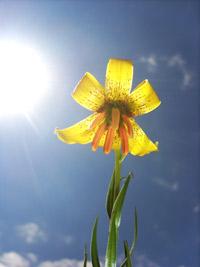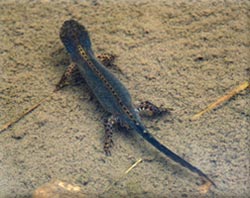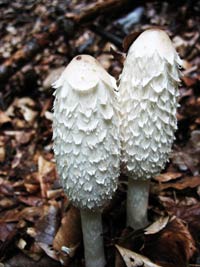SUTJESKA - FLORA & FAUNA
This area has a large number of different, well-preserved habitats, which are the basis for a rich and diverse living world. Going from the foothills to the top, there are light oak forests, then more shady beech forests. These are followed by mixed forests of beech and spruce, and at the highest altitudes are spruce forests, which towards the peaks transition into lower vegetation. At the highest elevations are high-mountain pastures and rocky areas. In the forests, besides the mentioned species, fir, maple, linden, hornbeam, ash, wild cherry also grow, and there are also very rare tree species such as yew and Bosnian maple... Pines are most common on the rocky cliffs of canyons, giving the landscape a striking feature. Numerous clear and cold mountain rivers and streams are inhabited by trout and grayling, as well as numerous smaller organisms such as freshwater crayfish, dragonflies and aquatic plants.
Among over 2,600 plant species, we highlight the most significant. First of all, it is the narrow-leaved bellflower (Edriaanthus sutjescae), endemic to the Sutjeska canyon. In canyons, meadows and forests, other species of limited distribution also grow: Bosnian thistle, Bosnian catchfly, Illyrian spurge and Dinaric evening primrose.
The abundance of water and humid habitats determines the richness of amphibian fauna. Earthworms and forest frogs live on the forest floor. High-mountain lakes are important for the survival of a rare amphibian species – the alpine newt.
Biogeographical position, habitat diversity and sunlight exposure are the determinants of the peculiar world of reptiles. Among other things, forest tortoises, green lizards and rare Mosor lizards live here, and among snakes there are grass snakes, Aesculapian snakes, nose-horned vipers and European adders – one of the rarest snakes in Europe.
The most striking representatives of bird fauna are golden eagles, cliff and canyon nesters, hunters over wide areas. Besides them, other birds of prey also soar through the airspace: short-toed snake eagle, goshawk, sometimes in flight the griffon vulture. Among owls there are a large number of species, from the smallest pygmy owl to the impressive eagle-owls.

Today very rare throughout the Balkans, the capercaillie has a rich and healthy population here. In April, their spectacular and enchanting mating displays can be seen at traditional "lekking grounds". The cliffs are also inhabited by colorful wallcreepers, birds colored like butterflies, as well as yellow-billed choughs, which circle in flocks and feed on grasshoppers in the meadows. The "virgin" untouched primeval forest Perućica echoes in spring with the songs and calls of birds, including species that have almost disappeared from most Balkan forests due to logging. There are nuthatches, stock doves, flycatchers, redstarts and very rare three-toed woodpeckers.



The most magnificent are certainly the large mammals, which today in Europe survive only in preserved and undisturbed expanses of wild nature. Together with Durmitor and other Montenegrin mountains, this is the heart of one of the most vital and richest populations of bears, wolves and chamois in Europe. Caves and old trees of ancient forests are home to a large number of bat species. High above the forest line live rare snow voles. There are also wild boars and roe deer, wild cats and martens, otters, dormice, moles, squirrels and hedgehogs.
From every viewpoint stretches an endless expanse of magnificent mountains, canyons, rivers, lush forests and flowering meadows, primordial undisturbed wilderness. The rich and diverse living world completes this beauty, giving man a sense of lost connection with nature in one of the rare places where that bond can still be grasped.
